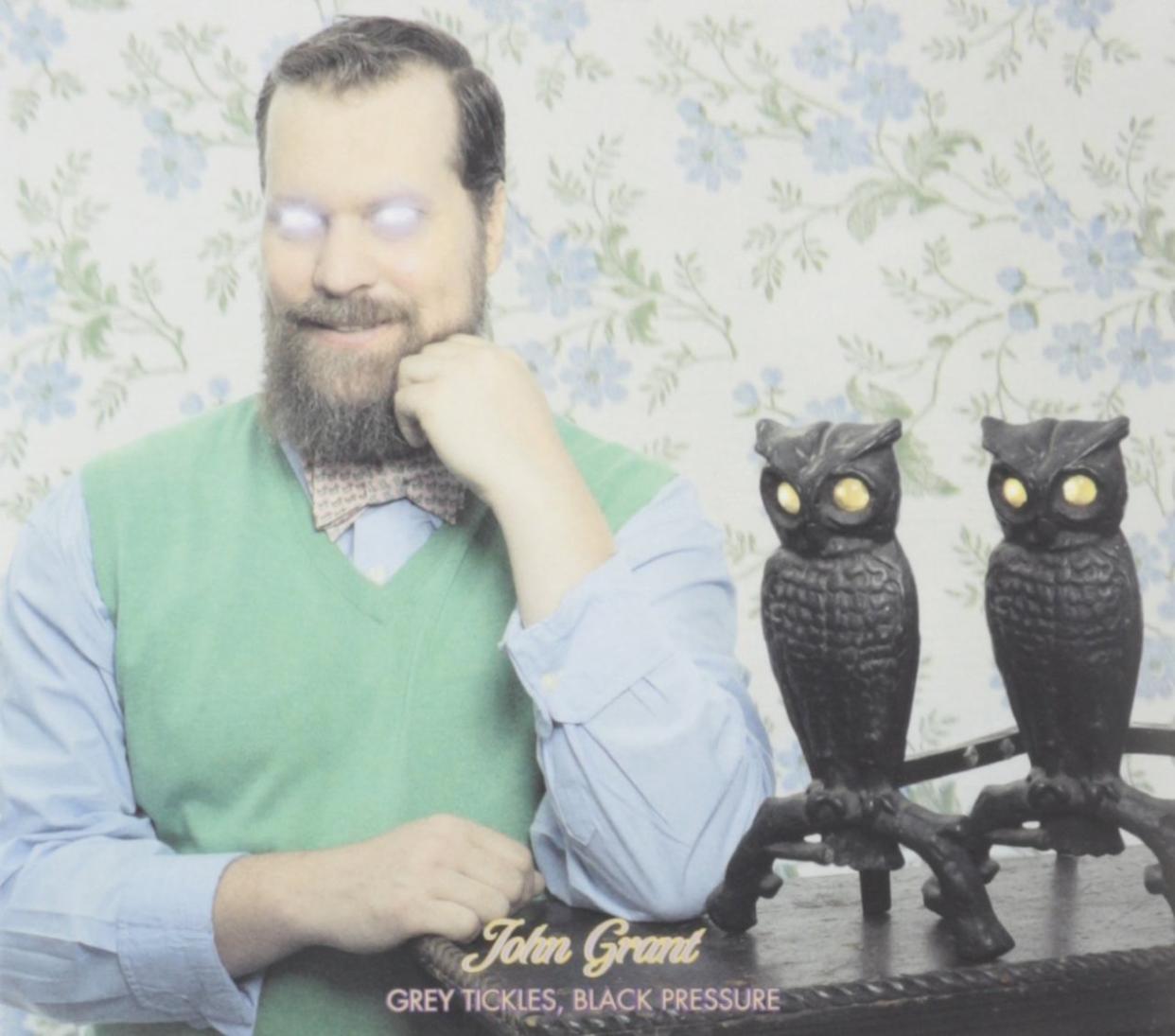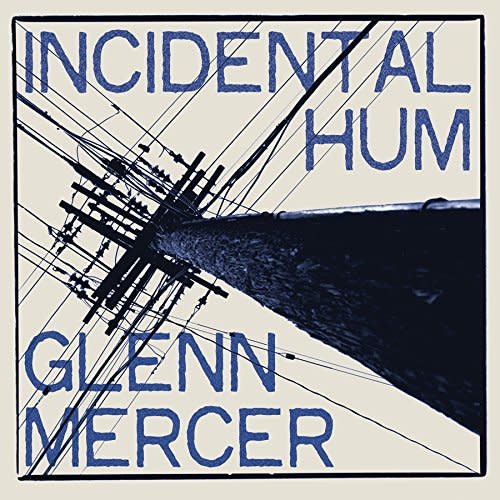John Grant’s Forward Surge, St. Germain’s Groovy Return & More

John Grant: Grey Tickles, Black Pressure (Partisan) It’s striking how music’s very best and most emotionally complex albums are are often given the same in-depth critical consideration as are today’s much less substantial best-sellers, and how little difference it makes. Nobody cares. If I told you that this new album by Grant, onetime central figure in the Czars and a huge critical favorite of the moment, was absolutely spectacular, would it make much of a difference to you, to him, or his bank account? Nope. And it isn’t spectacular—it’s just really good, meaty in its subject matter, and by no means easy listening. And as a piece of art, it’s much less contemporary, say, than Ryan Adams’ cover of a Taylor Swift album—but it is likely to be discussed well into the next decade, and good luck to those other folks. As Grant albums go, this is very good, if perhaps lyrically more direct and less subtle than it could be: Disease, sexuality, cancer and “Snug Slacks” are the topics at hand, and when Grant’s lyrics and melodies connect—as they generally do—the emotional effect is often enormous. He is a fascinating figure, and that he has been recognized as a major singer/writer at this point in his career—albeit mostly in Europe—verges on the slightly miraculous. To the uninitiated: I would recommend you seek out whatever Czars music you can find—you will love what you hear—and move forward, systematically, to this. It’s a rewarding journey.

St. Germain: St. Germain (Nonesuch) If there were ever a perfect groove album, it might be Tourist, the stunning Blue Note album by French producer Ludovic Navarre, aka St. Germain, released in the year 2000 and still sounding as if it were released just yesterday. Combining textures of jazz, electronics, dance and African musics, the album was nearly perfect, an impeccable merger of all that was good at that very moment. So bingo: Here’s another one, 15 years later. Self-titled and released on Nonesuch, St. Germain is more of the same, but maybe even better. Still groove-crazy, still loaded with African rhythms and melodies—Malian guitarist Guimba Kouyate helps here considerably—the record combines electronics, organic music, rhythms and soulfulness in a strikingly individual and recognizable way. It’s St. Germain, it sounds like St. Germain, and it sounds even better listening to it in your car. Listen, then listen some more.

The Zombies: Still Got That Hunger (The End) You can look at the calendar and quite credibly say holy crap—this band has been making records for over 50 years—or, maybe preferably, kick back and listen to the music on display here, and the calendar won’t mean anything at all. With a legacy rivaling that of nearly all of their fellow British Invasion mates—and that company includes the Beatles, Stones, Kinks, Who, and Small Faces—the Zombies have the singles, the albums, and the actual playing chops to rival any band that ever was. And the appropriateness of this album title is especially evident in the music within. Zombies singer Colin Blunstone still has that eerily airy voice and remarkable range, founding keyboardist Rod Argent is not only a fine player, he takes tasteful, non-excessive, actual solos throughout many of the songs here—who does that anymore?—and the band could not be in better shape. Featuring a remake of their 1965 single “I Want You Back Again,” an autobiographical look back at their introduction ‘60s America with “New York,” and several songs entirely appropriate for a band of grinning geezers (“Chasing The Past,” “And We Were Young Again”), this is a fine album that should please fans enormously for its conspicuous respect of the Zombies’ legacy–and its not pandering to the kiddies. Good show.

Glen Mercer: Incidental Hum (Bar/None) An unassuming, lovely instrumental set by Feelies founder Glenn Mercer, upon which he plays all instruments and evokes an interesting blend of ‘70s European movie soundtracks and, in terms of the occasional guitar tone, Brian Eno circa Here Come The Warm Jets. It’s all really good, really moody, and filled with the sort of dreamy textures the Feelies aimed for back in the infamous day. There are covers—of the title track from the Eno album mentioned, of “Over The Rainbow,” and of Hendrix’s “Third Stone From The Sun”—but they fit into Mercer’s own material seamlessly, in a way that makes you want to go back and enjoy the Feelies all over again. When it’s really hard to describe exactly why a band is so good…that’s how you know they are so good, right? You will like this.

Tori Amos: The Light Princess (Original Cast Recording) (Mercury Classics) It the scheme of things, it’s interesting how those with the very best of musical schooling often start out in the field of pop—think Randy Newman writing pop songs in the ‘60s, making solo album in the ‘70s, moving on to movie soundtracks in the ‘80s, or Tori Amos with rock attempt Y Kant Tori Read, singer-songwriterdom via the ‘90s’ Little Earthquakes onward, and now this. An ambitious, impeccably performed, original cast recording penned by Amos, based on a book by Samuel Adamson, this is theatre music: Adult, hardly pop, but the sort of thing that would be rewarding as hell when witnessed in one’s best clothes during a Sunday matinee. The music’s fine, the ambition is admirable, and the desire for artistic growth is highly laudable. And so: Good for Tori Amos.

Alex G: Beach Music (Domino) There is a mess of slop all over Beach Music, lovingly played and creatively edited by Philadelphia’s own Alex Giannascoli, or Alex G., but it is the sort of charming, appealing mess that is loaded with layers of subtlety, and counter-melodies, and chipmonked-up vocal choruses, that indicates the man is following a very special muse, and that muse has trouble walking in a straight line after having too much to drink. The press blurbs that accompany this release are a bit too accurate—the namedrops include Neil Young, Pavement, Pixies and Elliott Smith, and yeah, that all makes sense—but those names are uniquely personality-filled, which is what the music of Alex G. very much seems to be. This is an album that, were you to live with it every day for a week, would insinuate itself into every nook and cranny of your being. Which either means it’s good or we all, collectively, now have the attention span of a gnat. Either way we win!

Daniel Martin Moore: Golden Age (OK Recordings/SofaBurn) There is a conspicuous amount of song craft, playing ability and actual talent on Golden Age, the new album by Daniel Martin Moore, which rears its head on nearly every one of its 10 tastefully arranged tracks. Produced by My Morning Jacket’s Jim James, the album at times oddly evokes what a gospel-tinged Bread album might’ve approached circa 1972 or so. For me, Moore’s talents leapt out of Dear Companion, the duet record he made with Ben Sollee five years ago; this is a smoother, more emotional experience, but certainly no less rewarding. An excellent crew of backing musicians is on hand, as is the occasional cello and violin–and the overwhelming feeling is of a very good record by a very good artist who simply wants to make very good art, and that may indeed be all. This is the sort of record that will sound just as good 20 years from now–and that isn’t small.

The Beckies: The Beckies (Real Gone Music) There are fewer and fewer classic or highly regarded albums that have yet to turn up in the CD configuration—and since that’s going away, there will probably be even fewer in the future—so let’s give thanks here to the Real Gone label for seeing fit to reissue one of the last rarities in the canon of the brilliant Michael Brown, whose groundbreaking ‘60s work with the Left Banke (“Walk Away Renee,” “Pretty Ballerina,” “Desiree”) and, later, Montage and Stories, was so perfect, but, sadly, so…minimal. He could have done so much more, but he didn’t. Here’s his last major project, originally issued on Sire in 1976 and pretty much defining what was then termed power pop: great pop songs, great hooks, great vocals, and melodies galore. There are 11 songs in all, and while at the time they did sound a tad retro—deliberately so—in 2015 they sound like classics, one and all. Back in print, at least for now, and you’d best grab it while you can.

